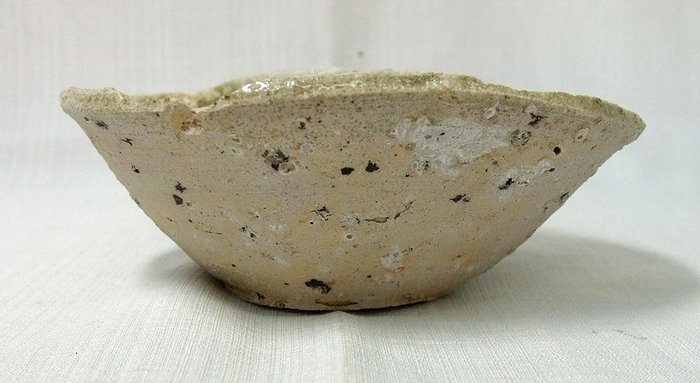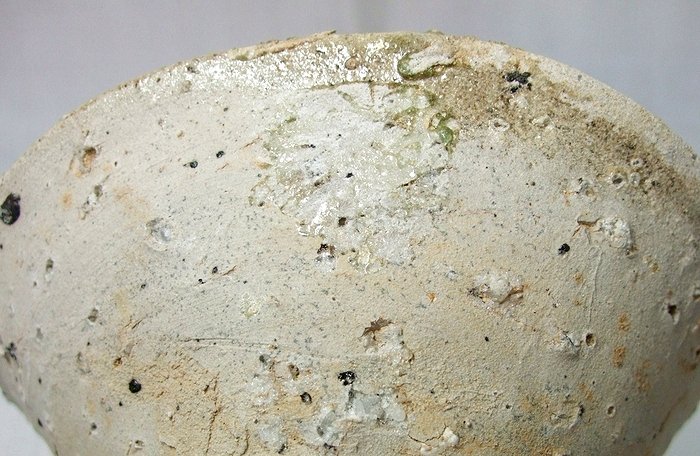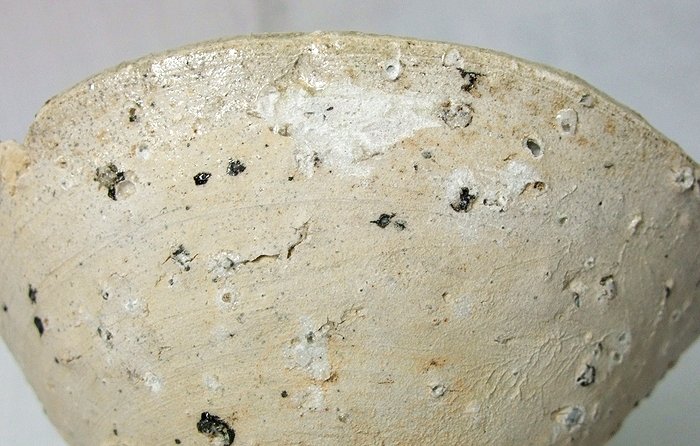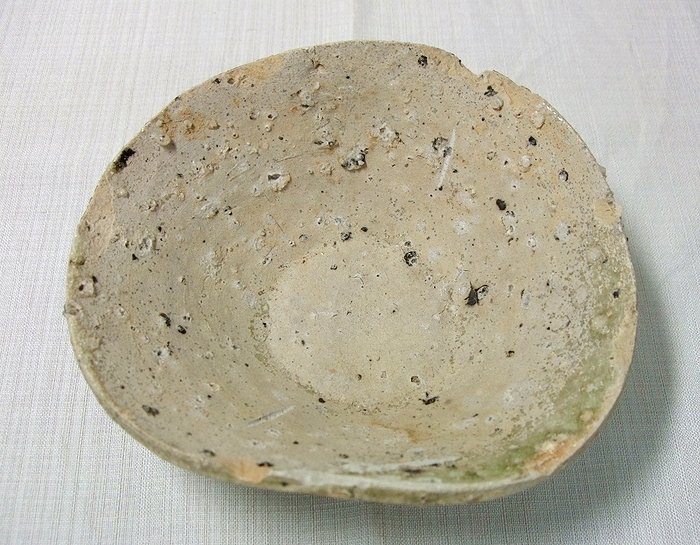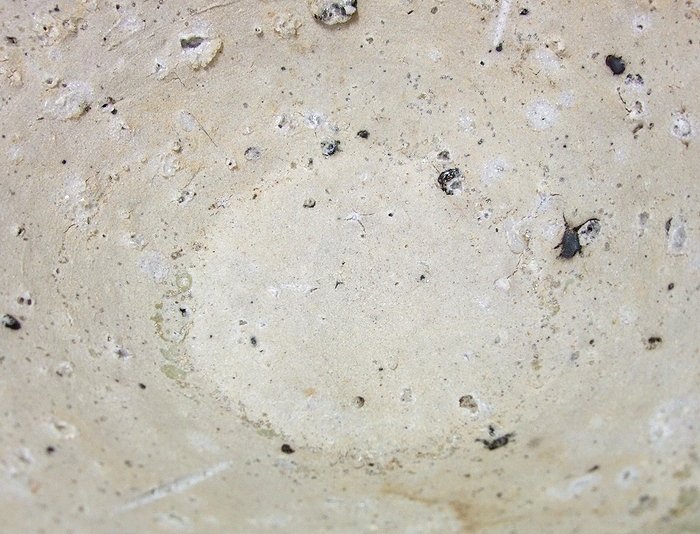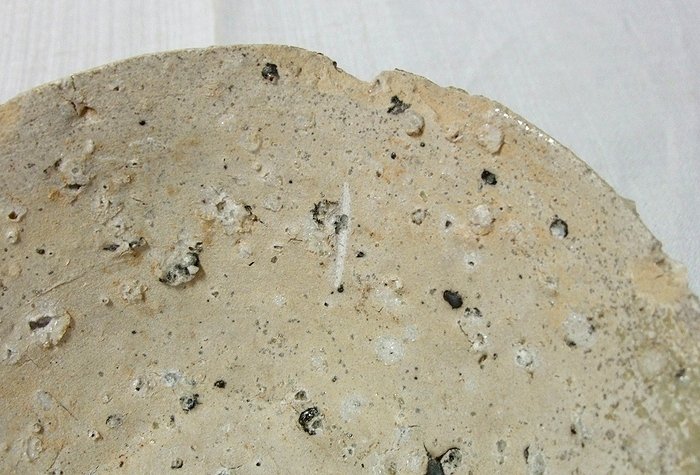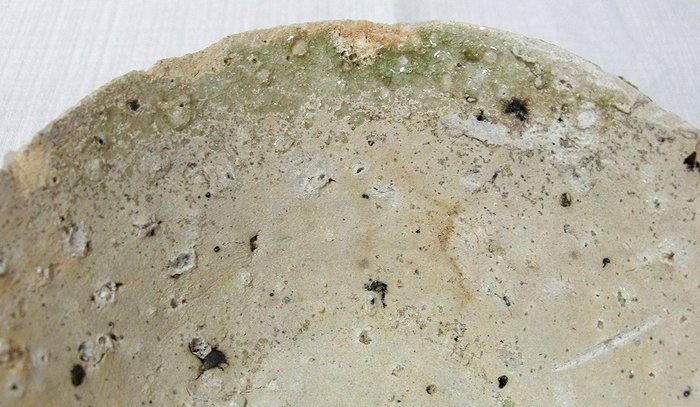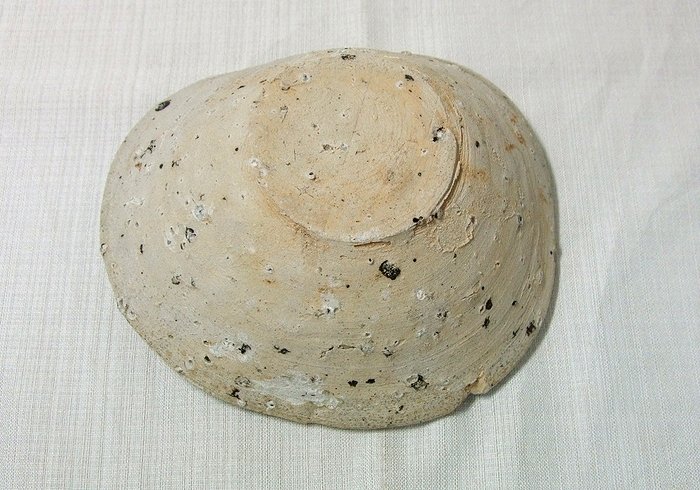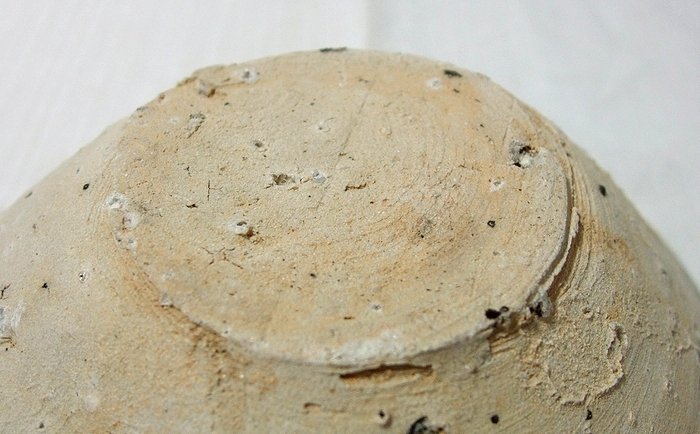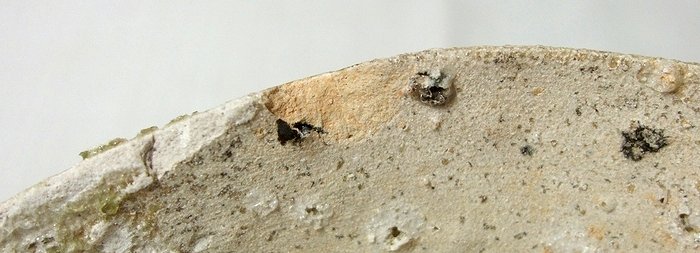This is an excavated article...
Seto ware is pottery with the oldest history in Japan. There is no older chawan in existence (Heian-Kamakura period, 12-13th century).
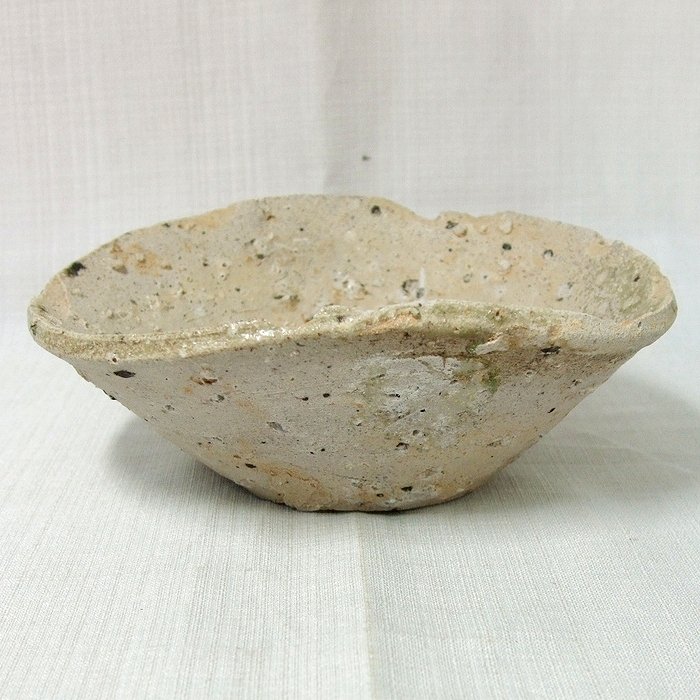
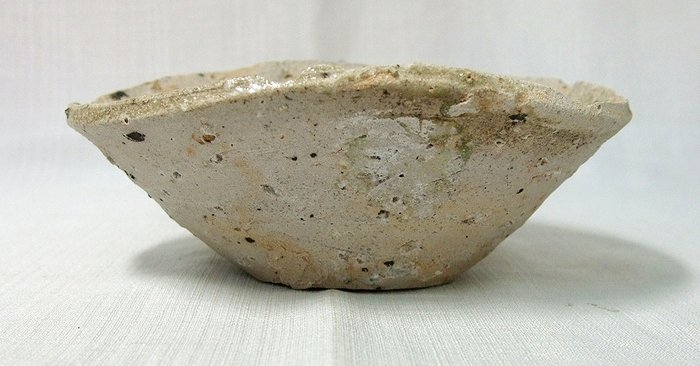
Size : about 5.51" x 4.90" (width): 2.10" (height) inches.
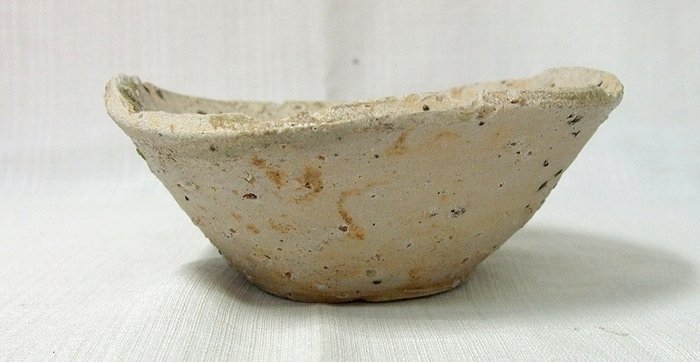
| Since the products from the early Tokoname kilns in the Heian, Kamakura and Muromachi periods (794-1573) are mostly vases and jars, it was once thought that production of early Tokoname ware was limited only to these two shapes. However, Yama-Chawan (mountain tea bowl) were also fired and shards of the mountain tea bowl have been found at many kiln sites. The style of the mountain tea bowl is coarse in appearance and its trumpet mouth rim is not tapered but terminates in an abrupt 90deg. lip edge. Besides this piece, large flat bowls, dishes, roof tiles for Buddhist temples, lipped bowls, cooking pots and other various utensils for daily use were produced and fired in anagama kilns (tunneled sloping Kilns) located along the ridge of hills running through the central Chita peninsula.
The holding impression is
tastefully a little shallow and heavy, and comfortably
"coarse".
From the Heian Era in the early 10th century, in the area including the northwestern sector of Tajimi and the western area of Kani, shirashi kilns were built. Within shirashi, there are works covered in ash glaze or ones that are unglazed, and also include copies of white porcelain and celadon porcelain from the Tang and Sung Dynasties in China. Products include cups, plates, bowls, urns and vases, inkstones and bells, and even ritual implements for esoteric Buddhist teachings such as rokki and kebyou. At first, the nobility, government officials, temples and shrines, and the wealthy only had access to these goods, but from the latter half of the 10th century, warriors and regular people were also able to use them. Unglazed pottery was included in the series of Sue Ware in which ritual Buddhist implements were common. From the end of the Heian Era, the manufacturing of shirashi gradually began to decline along with the kinds of containers, and a conversion to the production of mainly unglazed bowls and small plates was started. This type of pottery was called Yama-Chawan, and this phenomenon was thought to have come about from the diffusion of pottery to the masses and the beginning of pottery manufacturing on a broad national scale. The business region responsible for the manufacture of Mino kiln yamachawan excavated from historical market sites was smaller when compared to shirashi, but to increase the requests in the area, the kilns were enlarged and a conversion to mass production has been measured. The construction continued from the anagama of the previous age, and the kilns were either completely or partially underground. In addition, it was discovered that a flat zone was built on both sides of the kiln door, and remains of workshops, wood storage facilities and residential dwellings among other things have been found. The amount of wood used to enlarge the kilns increased as the areas round the kilns were deforested. The search for wood triggered a lively movement of the kilns. Then, some 20 to 30 years later when the forests replenished themselves, the kilns returned and the operations resumed. In the historic site of old kilns of Onadawakareyama in Tajimi City, there are 7 kilns in parallel formation which differs from what was the norm at that time. Oldest
Collectable - $400.00
Quite an aesthetic bowl in calm distortion as 'selected' Tokoname's biscuit firing vessel, dripped ore-like sparkle green natural ash glaze by the only supernatural kiln condition. Very senic with the particular simplest kodai bottom rim as its type, very fine antique condition as is. |
Return: Gallery
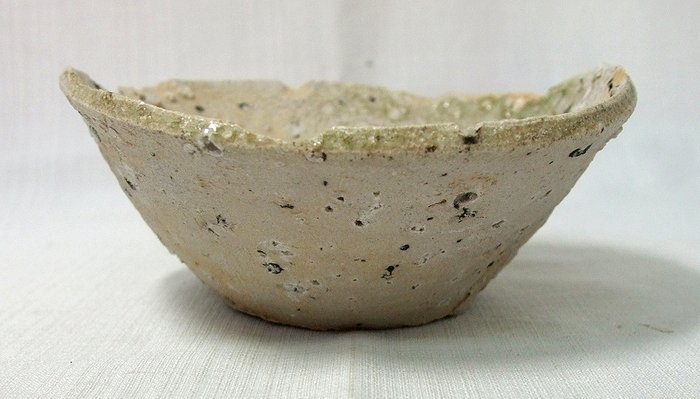 |
|
